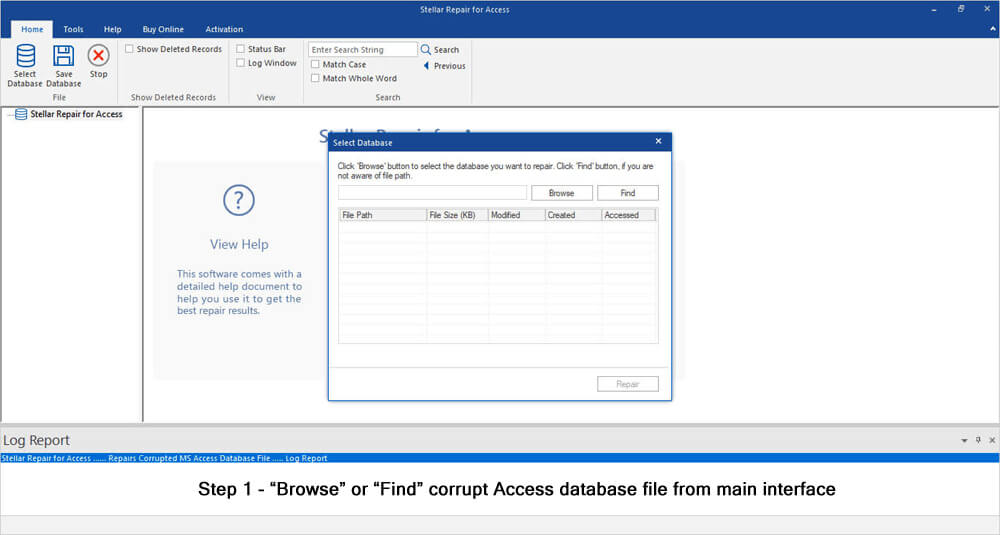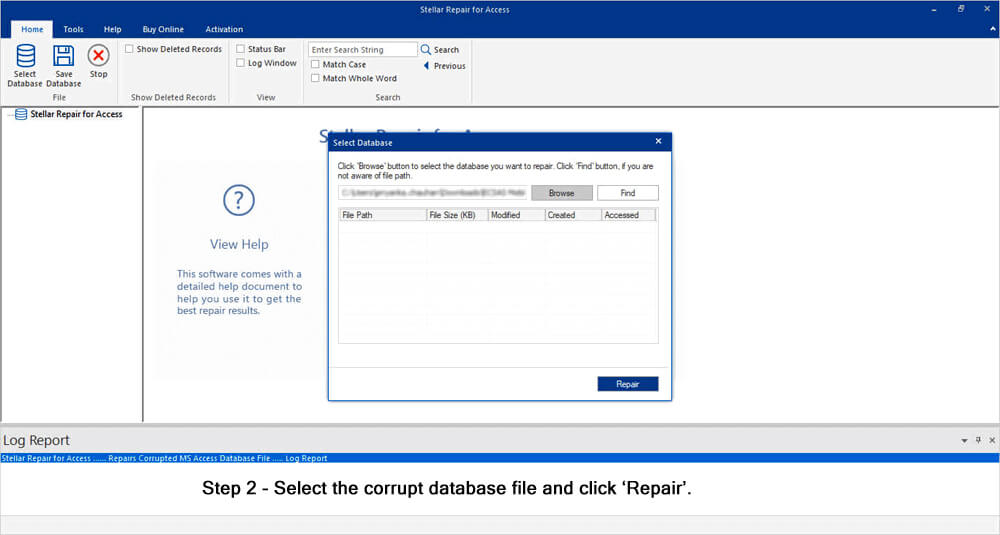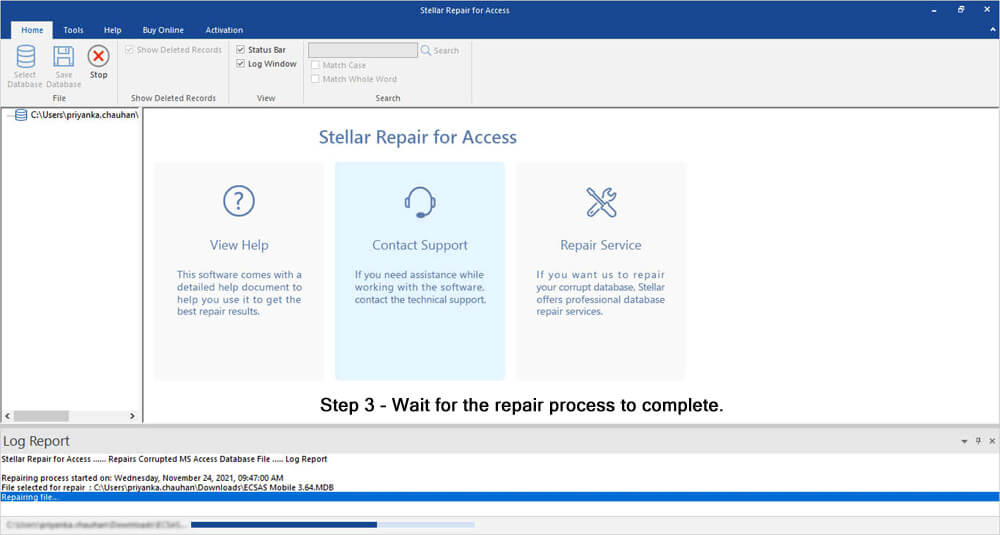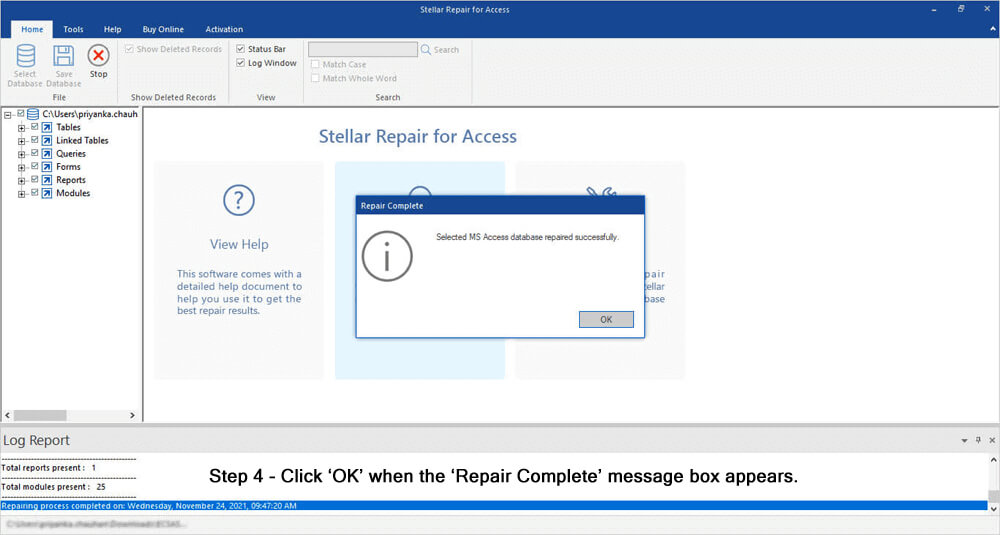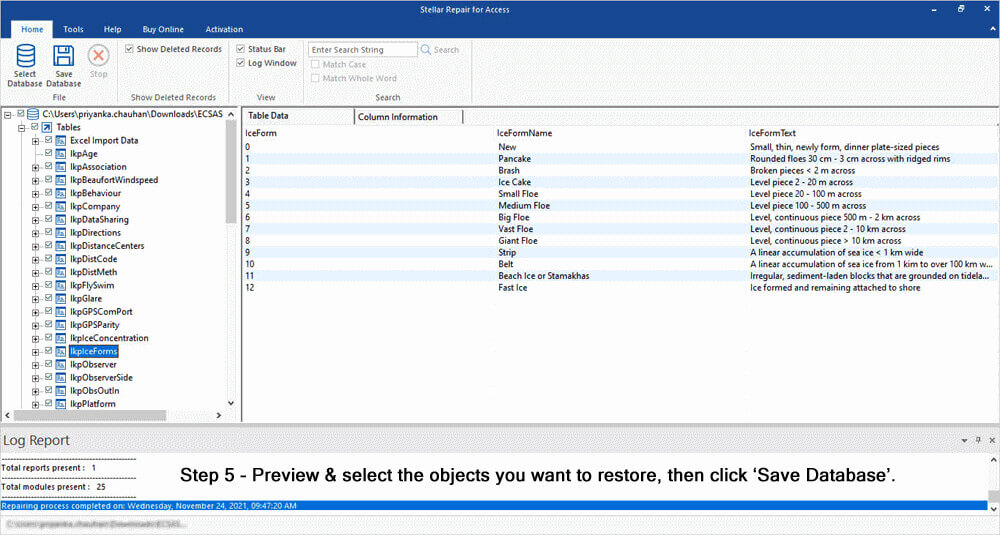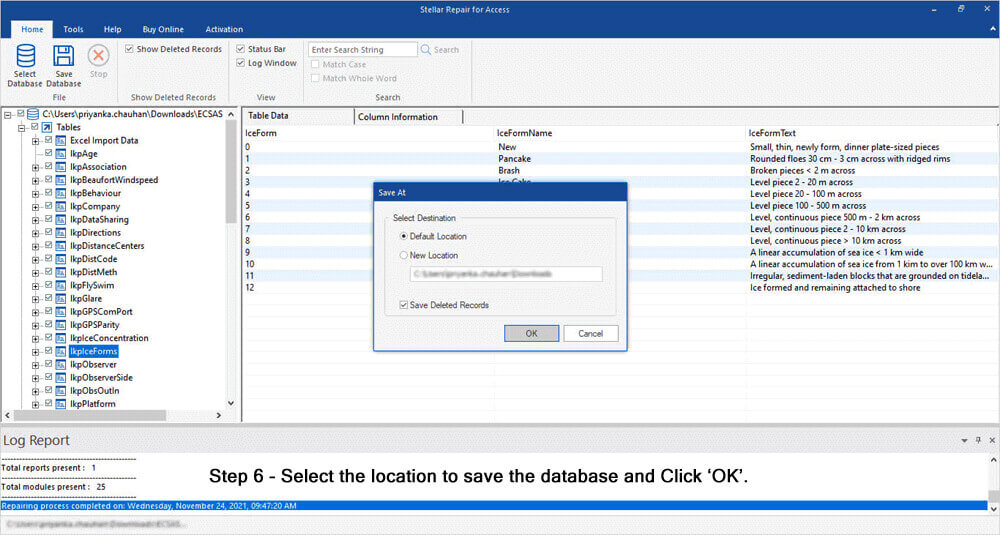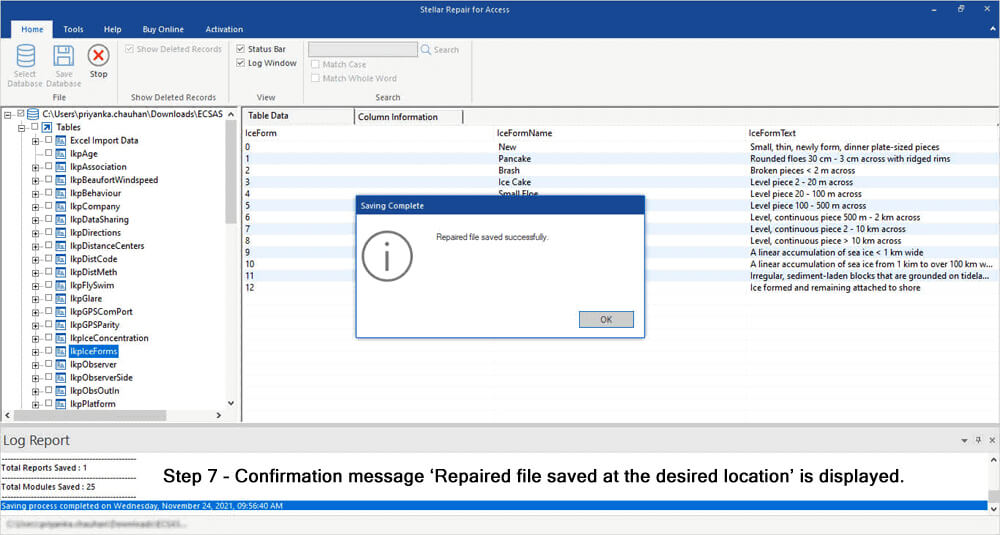In the Access database, ACCDB is a file format that plays a vital role in the DBM (Database Management), which helps to store crucial data for businesses and individuals. But sometimes, users fail to open their Access db .accdb file or the file completely restricts the user from performing any task on the file. Well, it’s a clear indication that the file got corrupted, and it is essential to repair corrupted accdb file ASAP. In this blog, I’ll explore the common signs and causes behind it including ACCDB file repairing solutions.
Free MS Access Database Repair Tool
Repair corrupt MDB and ACCDB database files and recover deleted database tables, queries, indexes and records easily. Try Now!
By clicking the button above and installing Stellar Repair for Access (14.8 MB), I acknowledge that I have read and agree to the End User License Agreement and Privacy Policy of this site.
Quick Navigation:
- Part 1- What Is ACCDB File Extension?
- Part 2- Common Signs of ACCDB Corruption
- Part 3- What Causes MS Access Database (ACCDB) Corruption?
- Part 4- How to Repair a Corrupted ACCDB File?
- Part 5- How to Recover Access Database ACCDB File?
Brief Explanation- What Is ACCDB File Extension?
Microsoft Access database file is integrated with database encoding specification by Microsoft to replace the previous MDB version with .accdb database file format. The .accdb extensions are integrated with support for Microsoft SharePoint Services and are used to store vital data of businesses and individuals.
In simple words, we can say that the Access Database ACCDB file format replaces the older MDB format used in prior versions of Access. This includes various enhancements, including support for encryption and file attachments.
Common Signs of ACCDB Corruption
Find out the common indications to identify the ACCDB file corruption:
1. Inability to Open/Access the File
If you can’t open a previously accessible .accdb database file, it is a red flag for potential corruption.
2. Missing or Distorted Data
Data corruption can cause missing data fields or distorted data within the database file.
3. Error Messages
When you come across error messages while trying to open an ACCDB file, it may indicate corruption. Here are some of the error messages that you may encounter:
- The database ‘filename.accdb’ needs to repaired or isn’t database file
- Unrecognized database format ‘path/filename.accdb’
- Microsoft Access has detected corruption in this file
- The database is in an unexpected state.
What Causes MS Access Database (ACCDB) Corruption?
Below find out some of the common reasons that are responsible for inaccessible .accdb files:
- Virus/Malware Infection – If your computer is infected with viruses or malware then it can easily corrupt entire data stored in your system, including the Access ACCDB file.
- Improper Exit of Application – If you are working on your database file in MS Access and suddenly due to power failure your system gets shut down, it results in the improper existence of the application which can lead to the corruption of the Access database file.
- Hardware or Software Failure – Hardware/Software failure is very dangerous for computer data. There are two types of hardware failure – physical and logical. When the user faces any software or hardware failure then there are huge chances of data corruption/damage.
How to Repair Corrupted ACCDB File?
Follow the below troubleshooting tricks to repair ACCDB file.
Method- Use Sophisticated Access Repair Tool
MS Access Repair Tool is one of the widely used software that is particularly designed to repair corrupted Access database .accdb file. Not only .accdb, it also repairs corrupt .mdb file and safely recover the data from the corrupt database.
It comes with a user-friendly interface and anyone can operate it easily. The tool works on almost all versions of Windows OS such as Windows 10/8.1/8.1/XP/Vista, etc.
Moreover, it can solve all the Access database errors that have occurred due to file corruption without putting any risk of data loss or modifying any data.
- The software is capable of restoring deleted Access tables, forms, modules, queries, etc.
- It exports and saves a healthy database with the schema.
- This software supports well on all Access Database 2010/2013/ 2016/2019 versions & all former versions.

* By clicking the Download button above and installing Stellar Repair for Access (14.8 MB), I acknowledge that I have read and agree to the End User License Agreement and Privacy Policy of this site.
Steps Repair and Recover ACCDB File
Method 2- Use Compact and Repair Utility
Note: Before approaching compact and repair utility, you must take a backup of your file.
If you want a free ACCDB repair resolution, it is recommended to go for MS Access’s inbuilt Compact & Repair utility. Users can use this tool whenever they encounter any type of error due to corruption. To learn how to use the Compact and Repair tool, Click Here.
Method 3- Decompile Microsoft Access VBA code
When VBA modules get compiled in Access, the compiled code is very much dependent on the VBA p-code parser library. Few types of this library can lead to corruption if the compiled code is run on various machines with different versions of this library installed.
Microsoft added a command-line switch to access that allows removing all complied VBA codes from an Access database, leaving only the non-complied source code in place. You can try the command line switch if you can gain access to your database but strange error messages will appear during this execution of the VBA module/class code.
To run the decompile option from Access just open Access with a command-line option of ‘/decompile’, for example, run the following from the command line:
C:\Program Files\Microsoft Office\Office\MsAccess.exe /decompile C:\DatabasePath\FileName.mdb
Note:
You need to change the path shown above for MsAccess.exe if you installed it in a different location. After the completion of the decompile procedure, you should close Access and then re-open it to compile all modules again.
Method 4- Import Problematic Database into New One
Basically, in this method, the corrupted database is imported to the new Access database. it is the best option for database recovery Here is the steps to be followed to import the corrupt Access Database.
- First of all, open the MS Access application and create a new database file.
- Hit the create button to make a new file in the right-side section of the panel.
- In the new or fresh database file windows, hit the External Tab option from the above ribbon.

- Tap on the Access option as by pressing this option you can easily import your Access database.
- This will open up a new window named Get External Data – Access Database.
So, tap on the browse button and make the selection of your corrupt/damaged Access database file to import.
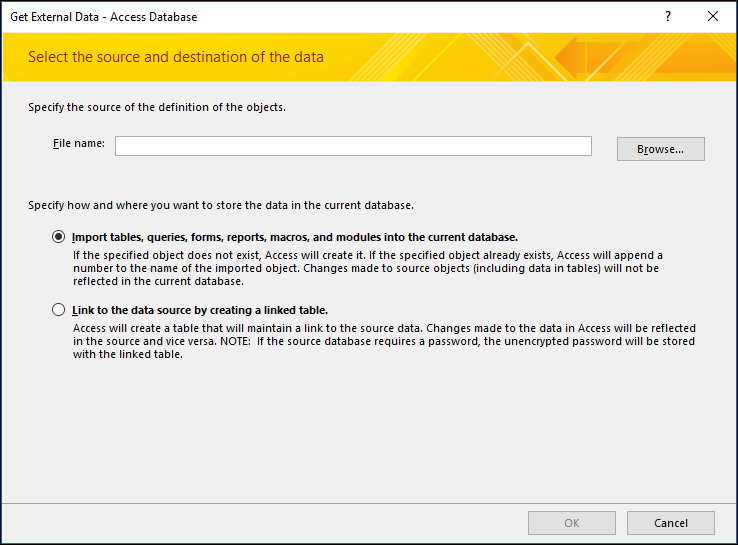
- Browse and choose Access database file in File Open dialog box. Tap on the Open option to confirm your selection.
- After that, hit the OK for further continuation of the process.
- Select the objects from the Import Objects dialog box and again press the OK button.
- Complete your selected objects to get imported successfully. Press save import steps box and hit the Close.
Also Read: Access Database Repair: The Ultimate Guide to Quick Fixes!
Method 5- Repair Corrupted ACCDB File by Deleting LDB File
The LDB file is the lock information file of the Access database. This file is generated whenever any user generates the Access Database. It has the same name as the Access Database file but has different file extensions i.e. .ldb. The deletions of such LDB files are important because excessive LDB files result in the corruption of the Access database. Deleting such files can help you to overcome the situation.
How to Recover Access Database ACCDB File?
Whether the file gets corrupted or deleted, restoring from backup is the primary option for many users. Thus, if you have an updated backup of a corrupted .accdb database file, try restoring it from the available backup copy.
Follow the below steps to do so:
1- Open the Windows File Explorer, then go to the location where you have stored the backup copy. select the backup.
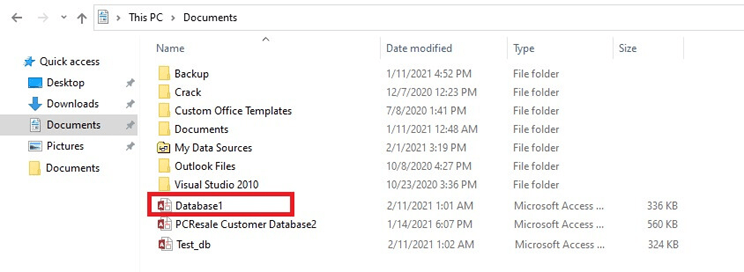
2- Now, save the backup file to the same location where a corrupt db file is saved.
3- Once prompted, replace an existing file with a backup copy.
Frequently Asked Questions
Can Free Tools Effectively Repair ACCDB Files?
If you are experiencing minor issues or corruption in the database, then free tools can effectively fix the ACCDB file corruption.
Is Using the Compact and Repair Database Utility on A Regular Basis Is Good Practice?
Yes, using the Compact and Repair Database tool is a good practice, it optimizes & repairs the database, enhances performance, and avoids data loss.
Also Read: Free Access Database Repair Tool for Corrupted Databases
Wrap Up
Repairing a corrupted .accdb file is a critical job that involves restoring the integrity of the Access database. This process requires expert tools or reliable methods to identify & fix issues within the file. However, by following the solutions outlined in this post, you can easily repair ACCDB file and work seamlessly on the database.
References:
This software repairs & restores all ACCDB/MDB objects including tables, reports, queries, records, forms, and indexes along with modules, macros, and other stuffs effectively. Still having issues? Fix them with this Access repair tool:
Still having issues? Fix them with this Access repair tool:
